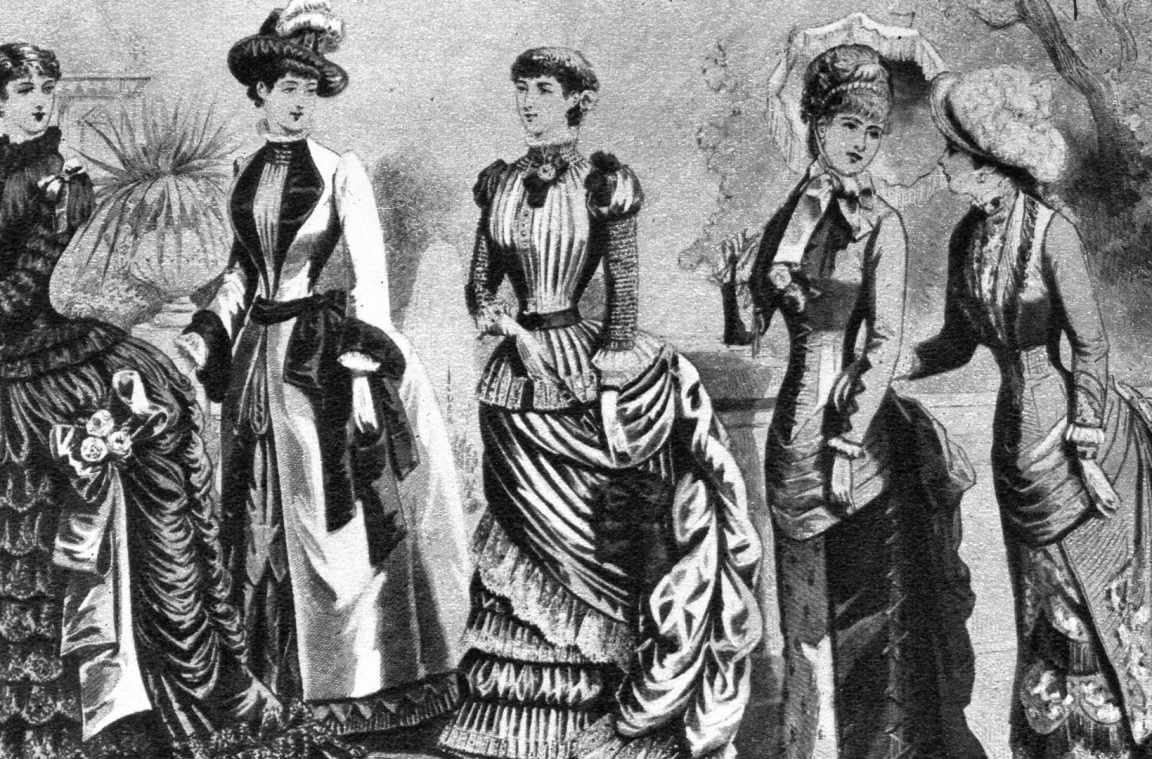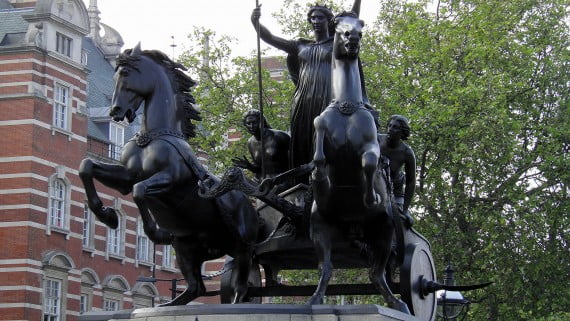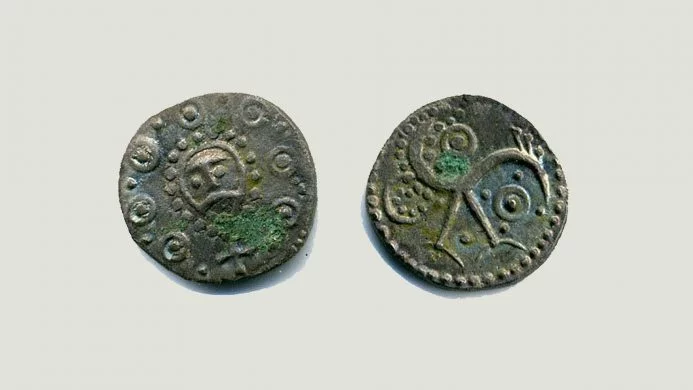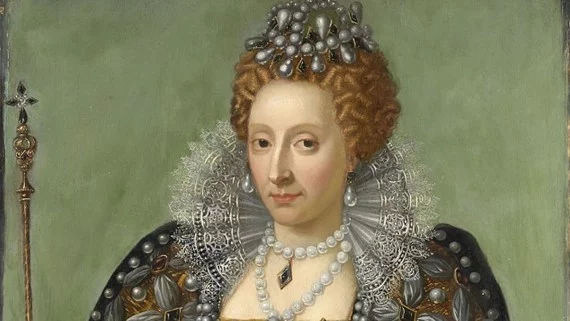London It is the capital of both England and the United Kingdom and is currently the largest city in Great Britain, as well as the European continent. Since it was founded by the Romans under the name of Londinium two millennia have passed and the history of London has gradually undergone great changes.
Below you have an index with all the points that we are going to deal with in this article.
Article Index
- 1.
- 2.
- 3.
- 4.
- 5.
- 6.
- 7.
Roman period: XNUMXth centuries
In AD 43 the Romans invaded what we know today as London this year. They then establish what is known as Britannia (Britannia in Latin), which covers from the center to the south of the island of Great Britain.
- 47-50 dC: the Romans built a wooden defensive fort on the River Thames, near the current Bridge of London.
- 50 AD: official historical moment in which it was founded Londinium and the city center.
- 61 AD: prosperity in the commerce sector was interrupted by the Celtic invasions. The first invaders were the Eceni, who finished off Londinium.
- 80-90 dC: The Romans rebuilt the city at Cornhill, the highest point to the north of the bridge.
- 230-250 dC: Londinium already had more than 30.000 inhabitants who descended from different ethnic groups.
- 312 AD: Emperor Constantine converted to Christianity and, from that moment on, this religion became the official cult of the empire.
- 320-400 dC: the gradual decline of the Roman Empire takes place in Great Britain due to the invasions of the Picts, Scots and Saxons (Celtic groups of Germanic origin).
- 410 AD: the fall of the Roman Empire occurs in Great Britain. The emperor Honorius denies his military aid to the Romans and they leave Britain and Londinium.
Anglo-Saxon period: XNUMXth-XNUMXth centuries
Many historians agree that some Romans still lived in Londinium during AD 457-604. During this period the new Lundenwic, a Saxon trading settlement outside the city walls, was established.
- 600-620 dC- With the conversion of the Saxons to Christianity, Lundenwic became a diocese and St Paul's Cathedral was built on Ludgate Hill.
- 730-745 dC: the Anglo-Saxons used as currency the sceattas (small coins weighing 1,3 g), considered the origin of the pound sterling.
- 842-886 dC: the Danish Vikings assault Lundenwic and a conflict begins that lasted until the year 886. The Saxon population, led by King Alfred the Great of Wessex, manages to expel the Danes from then on. Later, King Alfred founds the Roman city again, this time under the name of Lundunburg or Lunduntown.
- 1016: the Danish Vikings continue to attack the Saxon people until the people had no choice but to accept the new king of Danish origin: King Canute of England.
- 1042: the death of The Cruel Hardecanute and the throne returns to Saxon hands with King Edward the Confessor, founder of Westminster Abbey. This became the political, administrative and judicial headquarters of the city.
Norman and medieval times: XI-XV centuries
En 1066 the Norman invasion took place, thus beginning what is known today as medieval times.
This date marked a before and after in the history of England, since it was when the country really became a unified nation-state.
The Battle of Hastings was then fought, in which the Duke of Normandy was crowned King of England and received the nickname of The Conqueror.
- 1154: After the death of the last known Norman king, King Stephen, the throne passed into the hands of Henry II, of the House of Plantagenet.
- 1189-1199: the reign of King Richard I takes place, better known under the pseudonym Lion heart. He was the one who first recognized the City of London as an autonomous commune.
- 1215: King John, successor to Richard I, gave authority to the most powerful barons in the country and, in this way, was forced to reduce taxes. The first mayor of London, Henry Fitz Aylwin, forced King John to put his seal on the Magna Carta, which meant a decrease in powers for the monarch.
- 1300-1390: fire becomes a constant threat both in houses and on the streets. Numerous diseases spread little by little due to the precarious living conditions and the polluted waters of the River Thames. In 1348, the first outbreaks of the Black Death took place, killing almost half the population in less than two years. The economy was becoming weaker, which increased the discomfort of the population.
In the XNUMXth century, London gained wealth thanks to the houses of Lancaster and York, although the fight between the two culminated in the well-known War of the Two Roses.
The throne passed into the hands of King Edward V when he was only 12 years old, although he remained on the throne for only two months.
Later, King Edward V was assassinated, thus giving way to the reign of Richard III. This one died in 1485 at the hands of Enrique Tudor in Batalla de Bosworth.
Tudor and Elizabethan times: XNUMXth-XNUMXth centuries
After the assassination of King Richard III, the throne passed into the hands of the Tudor Dynasty, who remained there until 1603 (120 years). It is the best known English dynasty.
During the reign of the Tudors, London became one of the most important cities in Europe, thanks to the good progress of its trade and coinciding with the discovery of America.
Between 1491 and 1547 the reign of King Henry VIII of England and Lord of Ireland took place. It is considered that he wielded the most absolute power in the entire history of England. During his reign the Palace of Whitehall and St James's were built.
He also managed to take over Hampton Court Palace. He was proclaimed supreme head of the Church of England in order to be able to divorce Catherine of Aragon and marry Ana Bolena. He seized the wealth of the Church, ordered the dissolution of London monasteries, and ended Catholic culture in England.
This led to a great transformation of the city of London, from which emerged what we know today as Hyde Park, Regent's Park and Richmond Park. In 1547, Henry VIII died and the throne was inherited by his daughter Maria I Tudor, who reestablished Catholicism.
El reign of Elizabeth I lasted 45 years (1558-1603) and is considered the Golden age in English history, mainly due to the renaissance that English literature experienced. A certain religious tolerance was also being implanted.
In short, England became a maritime power after defeating the Spanish navy in 1558. That same year is also marked by the creation of the first london map. The city became the first market in the world after the inauguration in 1570 of the Royal exchange, that is, the Stock Market.
In these last years of the Elizabethan era, John Stow presented A Survey of London, the first text that dealt with the history of the city. Great English authors such as William Shakespeare, Ben Jonson or Christopher Marlowe, among others, experienced great success with the theatrical representation of their works in theaters Rose y Globe.
Georgian era: XNUMXth century
- 1714: Queen Anne died leaving no descendants and, although she had several Catholic relatives who could have inherited the throne, the Settlement Act of 1701 prohibited a Roman Catholic from ascending to the throne. With which, George of Hanover arrived from Germany and was crowned King of England.
- 1714-1727During the years of the reign of George I of England, Robert Walpole of the Whig party became the British Prime Minister and lived at 10 Downing Street, which became the official residence of almost all ministers since then.
- 1750: the Roman wall that surrounded the City was demolished and the Westminster Bridge was completed.
- 1750-1780: During the Georgian era, London experienced great cultural enrichment. Thus, Georg Friedich Händel, court composer, composed works such as The Messiah o Aquatic Music. In 1755 the first monolingual dictionary of the English language was published, which was the work of Dr Johnson. Architecture also experienced a great development thanks to architects such as John Soane or John Nash.
Victorian era: XNUMXth-XNUMXth centuries
- 1837: This year took place the accession to the throne of Queen Victoria, granddaughter of King George III (1760-1801), at the age of 18. The reign of Victoria made London the decisive center of the British Empire, which already covered a large part of the earth's surface and ruled over 500 million people. This year the famous work of Charles Dickens also saw the light Oliver Twist and other novels that focused on the theme of poverty and despair of the London working class, because about 80% of the English upper class controlled society and, the rest, that is, the working class did not enjoy any kind of social benefit.
- 1859-1871: In 1863 the world's first underground train was inaugurated, which connected Paddington and Faddington Road. The result was so successful that more lines were soon opened. Big Ben was built in 1859 and the Royal Albert Hall in 1871.
- 1850-1880: approximately during this period the Industrial Revolution took place in England, a period also known as industrial age. In this way, it can be said that when Queen Victoria ascended the throne, the country's economy was based on the agricultural and rural sector, while after her death, the country was already highly industrialized. The expansion of the rail network in England is an example of the great milestones that were achieved in this period of British history.
- 1901: this year the reign of Victoria ended after her death. Queen Victoria has often been depicted with negative connotations; however, she was, in reality, a progressive and intelligent queen.
Contemporary era: XNUMXth-XNUMXst centuries
Edward, son of Queen Victoria, was crowned Edward VII of England in 1901, at the age of 60. This year began what is known as belle époque Londoner. In
- 1904: the first double-decker buses were launched, which today are the symbol of the British capital.
- 1906-1909: continuing with the development of the belle époque, the first luxury hotels were built in the city (eg the Ritz in 1906). Also department stores Selfridges They brought a touch of glamor to the city. In 1908 the first London Olympic Games were held, which took place in the White City Stadium.
- 1914-1918: in the year 1914 the First World War or Great War broke out. Almost 700 Londoners were killed by German bombs in the city, and another 2.000 people were seriously injured.
- 1918-1936: these years, known as interwar period, they saw how English society experienced a great development on a cultural level. The population increased, so that in 1921 it already reached almost 8 million inhabitants. The same cannot be said for the economy, which suffered a major crisis. However, despite all the economic hardships, the intellectual part of society was booming thanks to such well-known personalities as Virginia Woolf, EM Forster or the economist John Maynard Keynes. In 1922 the first BBC radio broadcast took place and 14 years later the first television program of the British network was broadcast par excellence.
- 1939-1945: in this period the Second World War took place, resulting at the end of the war in the almost total disappearance of the City and the East End neighborhood, as well as the loss of almost 30.000 lives. Today you can see this devastation as you walk through East London and the City and see the new buildings that have been built there.
- 1953: this year, the throne passed into the hands of the current queen, that is, the Queen isabel II. At this time, the country had already seen some improvement economically and in 1960 London was considered a good place to live.
- 1960-1970: the 60s saw the well-known movement hippy and he saw how the social norms established so far took a great turn with the introduction of the contraceptive pill or the legalization of homosexual marriage, among others. In 1969 the famous studio album by The Beatles qualified Abbey Road.
- 1979-1990: these years correspond to the leadership of Margaret Tatcher, leader of the Conservative Party or Tory, at the head of the government of Great Britain. Known as the woman of iron, became the most popular British leader since the war. During the Tatcher rule, London's lower classes suffered from the relentless cuts of the Welfare State, while the upper classes, as well as the business sector, could not do better.
- 1997: on August 31 of this year, Princess Diana, known as Lady Di, in a tragic traffic accident that caused great controversy during the coming years, since the causes that led to it or if it was an accident or caused it were never fully known. It has also been speculated that his death was masked.
- 1997-2007: the government passed into the hands of Tony Blair, belonging to the Labor Party, a political party that had not ruled for 18 years. Labor created the London Assembly in order to have a local government and thus elect a mayor for London. London grew during those years to become the XNUMXst century London: one of the great capitals on a world scale. This boom that culminated when it was chosen as the host city for the 2012 Olympics.
- 2012: many speak of this year as the year of London, mainly because of the celebration of the Olympic and Paralympic Games, which lasted a total of 29 days. On June 3 of this year, the Diamond Jubilee of the Queen isabel II, in honor of the 60th anniversary of his reign.
On June 23, 2016, a referendum was held on the stay of the United Kingdom in the European Union. The result was in favor of leaving the EU, a phenomenon known in English as 'Brexit' (British + Exit).
However, this result is not binding, since prior to the final exit from the EU, the British Parliament will have to repeal a series of laws. An example of this is the European Communities Act of 1972.
Top photo by JamesGardinerCollection.
This article has been shared 107 times. We have spent many hours collecting this information. If you liked it, share it, please:












